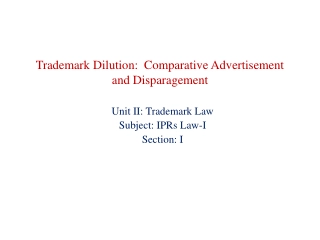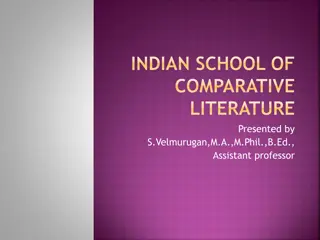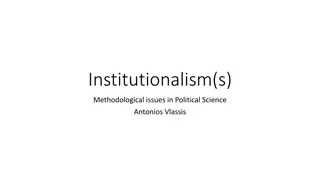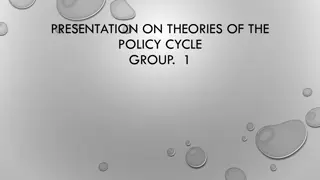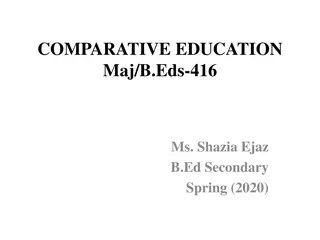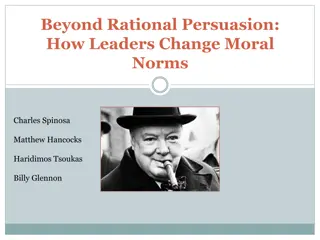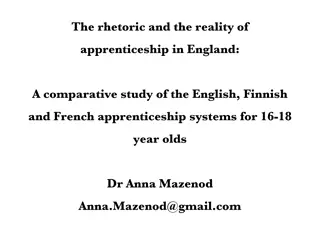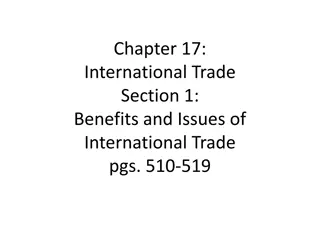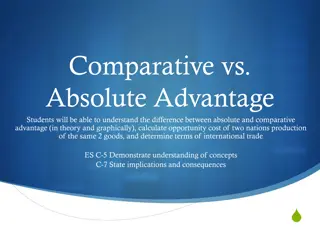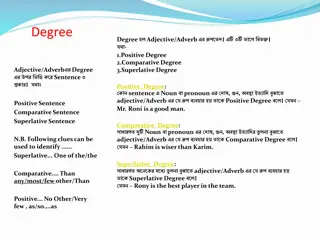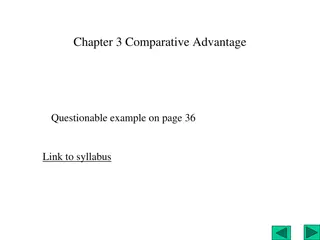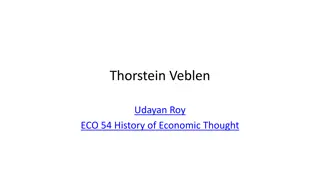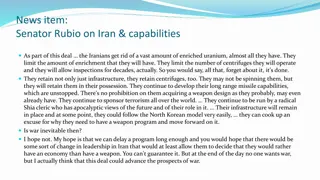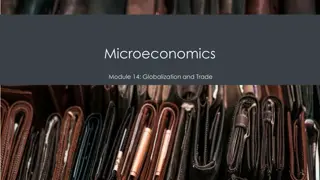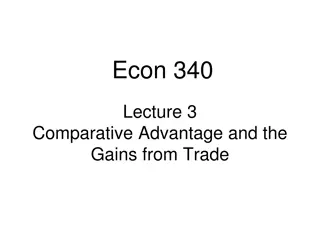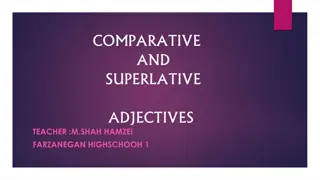Understanding Historical Institutionalism in Comparative Policy Analysis
Analyzing the methodological approach of historical institutionalism in qualitative process mapping for comparative policy analysis. Addressing the challenges, such as thick description and path dependency, and exploring techniques to overcome shortcomings through comparison over time, process tracing, and clarity in analysis levels. Key definitions of institutions, critical junctures, and path dependency are discussed to provide a foundational understanding.
- Comparative Policy Analysis
- Historical Institutionalism
- Qualitative Process Mapping
- Institutional Influence
- Analytical Techniques
Download Presentation

Please find below an Image/Link to download the presentation.
The content on the website is provided AS IS for your information and personal use only. It may not be sold, licensed, or shared on other websites without obtaining consent from the author. Download presentation by click this link. If you encounter any issues during the download, it is possible that the publisher has removed the file from their server.
E N D
Presentation Transcript
Using historical institutionalism as a method for qualitative process mapping in comparative policy analysis Dr Michael de Percy michael.depercy@canberra.edu.au www.politicalscience.com.au
INTRODUCTION Problems with Historical Institutionalism Qualitative, tends to result in thick description Path dependency tends to be tautological can a theory explain both stasis (persistence) and change (novelty)? Inductive Hume s problem of induction , typically due to: Small n too few cases Not falsifiable in a Popperian sense Methods tend towards empirical rummaging to find suitable evidence Everybody talks about Historical Institutionalism; few actually do it!
INTRODUCTION Overcoming the Shortcomings Comparison over time (quasi-experimental,) Institutions as the independent variable, outcomes as the dependent variable Plausible as opposed to falsifiable findings Mill s method of difference (most similar/most different systems design) Process tracing enables standardisation of analytical techniques as opposed to empirical rummaging Greater rigour in analytical technique addresses the problem of induction Be clear about the level of analysis (micro-meso-macro) (de Percy & Batainah 2019a)
KEY DEFINITIONS Institutions/Institutionalism Institutions typically refer to the formal mechanisms which govern collective action, including laws and state organisations, and the informal rules, routines and procedures which act to restrict or constrain individual behaviour. Institutionalism, then, views institutions as a major influence on policy and individual behaviour. Individual behaviour may still be rational, but within the limits, constraints and structures created by institutions.
KEY DEFINITIONS Critical Junctures At certain points in history, choices made or not made tend to influence the periods of stability which follow. In historical institutionalism, critical junctures are often viewed as contingent events which force the state to change the prevailing institutional arrangements.
KEY DEFINITIONS Path Dependency For political scientists, the choices made at critical junctures tend to restrict future choices by establishing institutions. These institutions, in turn, create powerful inertial forces which make it difficult to undo or change once resources have been committed to a particular path. The outcomes of these initial choices, and indeed the future choices available, tend to be path dependent.
KEY DEFINITIONS Punctuated Equilibrium Following the choices and institutional arrangements which occur at critical junctures, relatively long periods of equilibrium or stability tend to follow. When new ideas challenge the status quo, or exogenous shocks occur, a critical juncture may emerge which disrupts the equilibrium or stability until a new status quo emerges. Punctuated equilibrium refers to the relatively long periods of stability which are punctuated by relatively short periods of disruption which occur at critical junctures.
KEY DEFINITIONS Ideas The concept of ideas has been developed to demonstrate how an institution may change incrementally or through other dynamics such as policy learning or environmental change, particularly where ideas encompass possible courses of action or strategies to deal with policy problems. Political conflict over different ideas, then, may become a source of institutional change.
RESEARCH PROJECTS Uses to date: Comparison of communications technologies in Australia and Canada (de Percy & Batainah 2019b) Stephen Darlington s ANU PhD thesis on comparison of e-health policies Models of Government-Business Relations (de Percy forthcoming) Currently working on the impact of ideas on multilateral institutions (de Percy 2020) Currently working on road pricing comparison. Model presented here works best with networked technologies due to the historical legacies being physical infrastructure (more difficult/expensive to change)
REFERENCES De Percy, M.A. (forthcoming). Models of Government-Business Relations: Industry Policy Preferences versus Pragmatism in Andrew Podger, Michael de Percy, and Sam Vincent (Eds.) Practice in Politics: Essays in celebration of John Wanna s contribution to politics, public policy and public administration. Canberra: ANU Press. De Percy, M.A. (2020). Populism and a New World Order in Viktor Jakupec, Max Kelly, and Jonathan Makuwira (Eds.), Rethinking Multilateralism in Foreign Aid: Beyond the Neoliberal Hegemony. New York: Routledge. De Percy, M.A. and Batainah, H.S. (2019a). Government-Business Relations: Senior Version. In Chen, P. et al. Australian Politics and Policy. Sydney: Sydney University Press. De Percy, M.A. and Batainah, H.S. (2019b). Identifying historical policy regimes in the Canadian and Australian communications industries using a model of path dependent, punctuated equilibrium, Policy Studies, DOI: 10.1080/01442872.2019.1581161.
Process Tracing in Comparative Politics THANK YOU! Questions and comments


